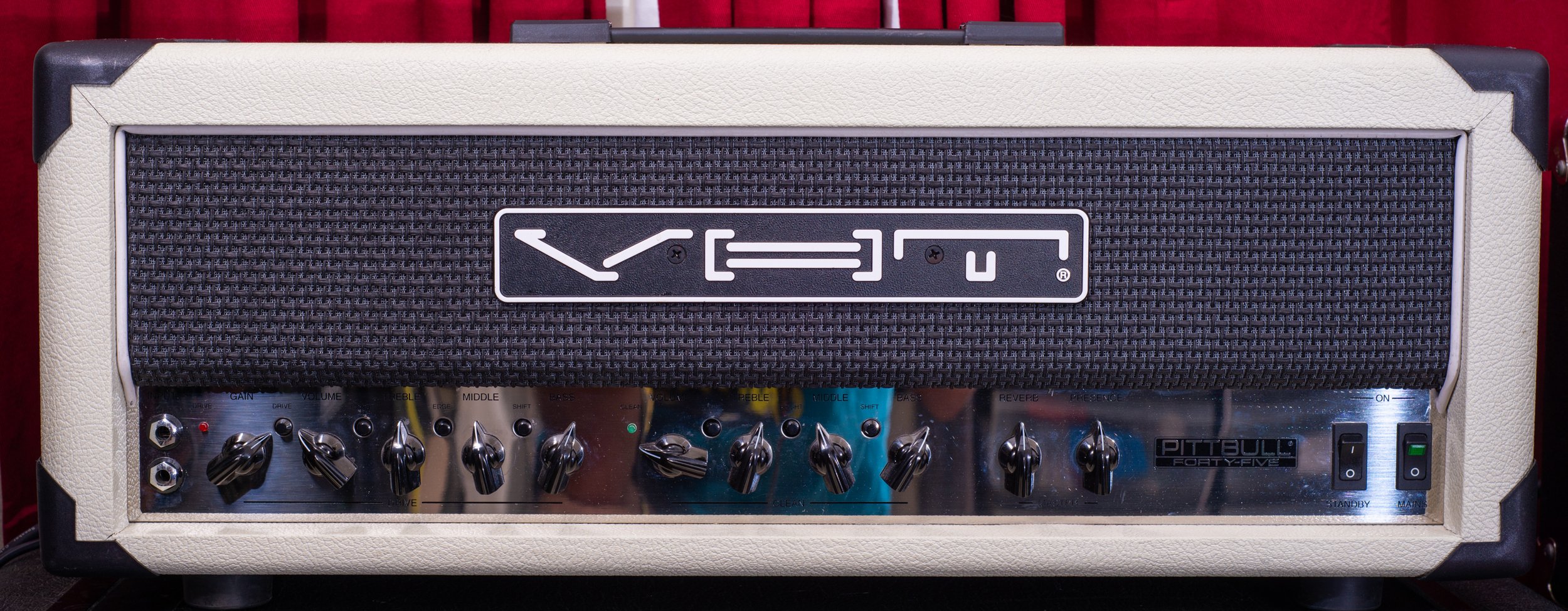Recently, I’ve been trying to get rid of combo amps and focus more on heads. With my studio setup, it’s easier to collect and stack the heads and just run long speaker cables to a cab positioned by my mics than move around combos - so one amp I never thought I’d own is a Pittbull 45. When this head popped up on Guitar Center’s used section, I jumped on it - only 165 or so head versions were ever made of this amplifier.
This one dates from 1996 and is actually amp #0007 made - James Bond would be proud (even if it has an extra zero). This means it’s very early in the run and uses an EL84 powered spring reverb circuit - very cool. It is definitely one of the most lush and amazing sounding reverbs I’ve heard in an amp but it has one major drawback - it clearly affects the tone when engaged, even if the mix is turned down. Luckily it’s footswitchable but there is enough of a volume and tone change I think it’d be hard to really make the best of live. I’m just recording at home and can work around it no problem - but it’s no surprise to see that later Pittbull 45’s had a revised tube reverb circuit powered by an EF86 tube - likely similar to my 50/CL’s EF86 tube reverb.
In addition to the EL84 for the reverb, this amp is powered by a quad more EL84’s (for 5 total) and sports a 5AR4 tube rectifier. The feel of this amp, especially the clean channel, is just plain inspiring. Later models had a Class-A mode switch on the rear but this particular amp is restricted to Class-AB. I would love to play one of these in A mode but I really find it hard to believe it could get much better than this.
The drive channel is much less like the modern VHT/Fryette tone you might expect - it’s warm, bright, and full with incredible touch sensitivity. With the gain rolled down, the footswitchable “boost” has a more pronounced effect too - great for punchy solos or even enough gain for classic metal. This is a pretty stark contrast to my 50/CL which can hit metal tones right off the bat, and adding the boost is only a small push further. That amp is also far darker and tighter - still one of my all time favorite tones - but certainly less capable of accurately portraying some classic rock tones.
One other surprise is that this amp is VERY loud, and hard to tame. There is no overall master volume unlike my 50/CL (which sounds great even at low volumes), only the channel volumes which really only open up in the first quarter turn - which is quite loud at that point. Luckily, squeezing a volume box into the FX loop makes it much more manageable and keeps the volume tamed for home recording just fine.
I’m not sure exactly what I expected from this amp but the lower gain and brighter tone really blew me away - another one of those “best kept secrets” and probably an amp very few would realize makes such a perfect vintage rock machine (especially with the “Pittbull” line being mostly considered to be “metal” amps). I can’t wait to find even more tones in this one.





